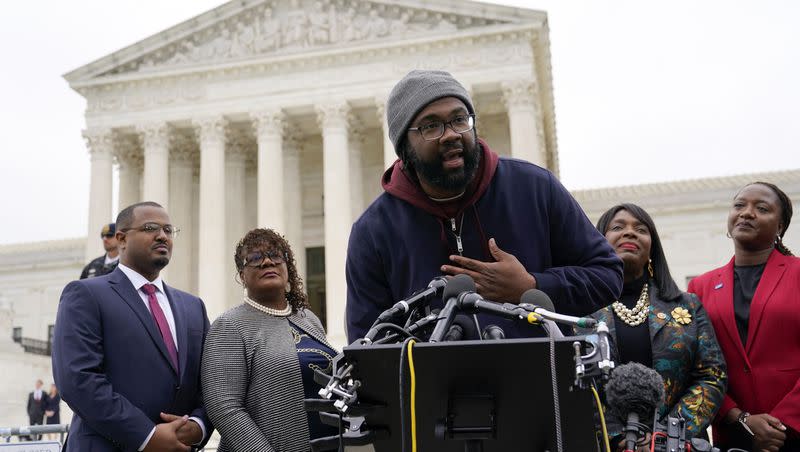Court strikes down Alabama redistricting map for noncompliance with Supreme Court decision

In June, the U.S. Supreme Court ruled that Alabama had denied Black voters a reasonable chance to elect a second representative and ordered Alabama to redraw its seven congressional seats. The map that Alabama submitted did not do that, and a federal court threw out the new map on Tuesday.
“We are struck by the the extraordinary circumstance we face,” the federal judges wrote in a 196-page opinion.
“We are not aware of any other case in which a state legislature — faced with a federal court order declaring that its electoral plan unlawfully dilutes minority votes and requiring a plan that provides an additional opportunity district — responded with a plan that the state concedes does not provide that district,” they continued, adding that they are “deeply troubled that the state enacted a map that the state readily admits does not provide the remedy we said federal law requires.”
A new map
The map that the Supreme Court ordered Alabama to redraw had one majority-Black district out of seven, while the state’s population is 27% Black. Their decision required the state to draw new lines that “will need to include two districts in which Black voters either comprise a voting-age majority or something quite close to it.”
The Associated Press reports that at the time of the Supreme Court ruling, Alabama Republican Party Chairman John Wahl said that state lawmakers would comply with the ruling. “Regardless of our disagreement with the Court’s decision, we are confident the Alabama Legislature will redraw district lines that ensure the people of Alabama are represented by members who share their beliefs, while following the requirements of applicable law.”
The new map Alabama submitted maintained Alabama’s one majority-Black district and increased the number of Black voters in the Alabama 2nd Congressional District by 10%, going from 30% to 40%.
“We discern no basis in federal law to accept a map the state admits falls short of this required remedy,” the judges wrote.
Related
What happens next?
The panel of three federal judges, including one Bill Clinton appointee, Circuit Judge Stanley Marcus, and two Donald Trump appointees, District Judge Anna Manasco and District Judge Terry Moorer, have assigned experts to draw three new maps to be presented no later than Sept. 25. A hearing on any objections is tentatively scheduled for Oct. 3, reports NPR.
Alabama’s secretary of state, who oversees elections, told the court that finalizing a plan around Oct. 1 “would provide enough time to reassign voters, print and distribute ballots, and otherwise conduct the forthcoming 2024 primary elections based on the new map.”
However, Secretary of State Wes Allen “cannot predict whether implementing a plan at that point would lead to disruption for state officials, local officials, candidates and voters.”
According to Reuters, state Attorney General Steve Marshall, a Republican, said, “While we are disappointed in (Tuesday’s) decision, we strongly believe that the legislature’s map complies with the Voting Rights Act and the recent decision of the U.S. Supreme Court.”
The state of Alabama has said it will appeal to the U.S. Supreme Court and the 11th Circuit Court of Appeals.
Holly Richardson is the editor of Utah Policy.

